Facial cleansing brushes have become increasingly popular in the last few years. What do they do? Who should use them? An overview of this trend.
What is it?
A facial cleansing brush is an electric tool with a small motor that produces either pulses or micro-oscillations (according to the model) to make the brush head’s tiny bristles vibrate. It is powered by batteries or charges on a dock.
Why should you use a facial cleansing brush?
A facial cleansing brush is up to 10 times more efficient than manually cleaning your face. And it only takes about a minute. So how does it provide such in-depth cleansing? Thanks to its rotating or vibrating system, it stimulates the skin, opens the pores and eliminates impurities on the skin. Even the first time you use it.
As it glides over the skin, the thousands of soft and silky bristles on the head massage the face and leave the epidermis clean, soft and smooth. Because this tool is so efficient, the skin will be able to better absorb the products you apply after you use the brush.
By regularly using a facial cleansing brush, your complexion will be clearer and brighter.
Who is it for?
It’s the perfect tool if you want to unclog your pores, get a radiant complexion and flawless skin, and don’t want to spend too much time or effort doing so.
The brush can be used on any skin type, except if you have sensitive skin or lesions (eczema, rosacea or acne).
How often should you use it?
It all depends on your skin type. You can use it every day or a few times a week, just like a scrub. Start by testing it on your skin once or twice a week. Then, depending on how your skin reacts, you can use it more frequently. If your skin gets irritated (redness, dryness, etc.), don’t use it often. Some sensitive skins might not react well to the brush’s pulses, even if its bristles are soft.
Have oily skin? Avoid using the brush too often because it could end up activating your sebaceous glands.
Important: Don’t use the brush after irritating treatments (peels or laser) to avoid weakening your epidermis.
Which cleanser should you use?
It’s all about how comfortable and soft the brush feels on the skin. You can use almost any cleansing product with the brush: cleansing gel, cleansing milk, oil, etc. However, it’s best not to use cleansing foam because that is a product that contains a lot of air and could make the brush feel uncomfortable on your skin.
Avoid abrasive cleansers (scrubs or products containing fruit acid) which could irritate your skin.
How do you use it?
It’s simple. Dampen your skin and the brush with water, apply a dab of cleansing product on your skin or on the brush, then turn on the brush and glide it over your face using circular motions, one zone at a time (forehead, nose, chin, cheeks). Hold the brush close to the skin but don’t press too hard. You want to clean your skin, not strip it away!
Make sure you carefully read the instructions that come with the brush because each model has different guidelines for brush movements, recommended usage time, method and frequency of use, etc.
Once you’re done, simply rinse your face with lukewarm water and apply your favourite moisturizing product.
Important: Thoroughly wash your brush after every use and store it in a dry and clean area. To reduce the risks of bacterial growth, you should replace the head every three months.
Our suggestions:
- Conair True Glow Beauty Sonic Skincare Solution Brush
- Olay Regenerist Advanced Anti-Aging Facial Cleansing Brush
- Personnelle Cosmetics Facial Cleansing Brush

